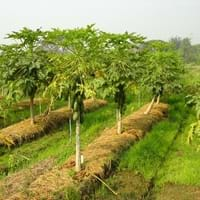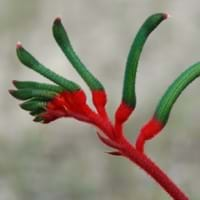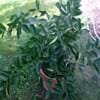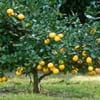Life Span
Annual and Perennial
Perennial
Origin
Mexico, Central America
Australia
Types
Male Papaya Tree, Female Papaya Tree, hermaphrodite Tree
Not Available
Habitat
tropical environments, Tropical regions
Dry areas, Temperate Regions, Well Drained
USDA Hardiness Zone
10-15
10-11
AHS Heat Zone
12-10
12-10
Sunset Zone
H1, H2, 21, 23, 24
12, 13, 15, 16, 17, 18, 20, 21, 22, 23, 24
Habit
Upright/Erect
Clump-Forming
Flower Color
Ivory
Red, Green
Flower Color Modifier
Bicolor
Bicolor
Fruit Color
Green, Orange, Light Yellow
Not Available
Leaf Color in Spring
Dark Green
Dark Green
Leaf Color in Summer
Dark Green
Dark Green
Leaf Color in Fall
Dark Green
Dark Green
Leaf Color in Winter
Light Green
Dark Green
Leaf Shape
Irregular
Linear
Plant Season
Spring, Summer, Fall, Winter
Spring, Summer, Fall
Sunlight
Full Sun, Partial Sun, Partial shade
Full Sun, Partial Sun
Growth Rate
Very Fast
Medium
Type of Soil
Loam, Sand, Well drained
Loam, Sand
The pH of Soil
Acidic, Neutral
Acidic, Neutral
Soil Drainage
Well drained
Well drained
Bloom Time
Indeterminate
Spring, Late Spring, Late Summer, Early Fall
Tolerances
Drought
Drought
Where to Plant?
Ground
Container, Ground, Pot
How to Plant?
Seedlings
Seedlings, Tissue culture
Plant Maintenance
Medium
Medium
Watering Requirements
Average Water Needs, Do Not over Water, Do not water frequently, Requires watering in the growing season
Average Water Needs
In Summer
Lots of watering
Lots of watering
In Spring
Moderate
Moderate
In Winter
Average Water
Average Water
Soil pH
Acidic, Neutral
Acidic, Neutral
Soil Type
Loam, Sand
Loam, Sand
Soil Drainage Capacity
Well drained
Well drained
Sun Exposure
Full Sun, Partial Sun, Partial shade
Full Sun, Partial Sun
Pruning
Remove damaged leaves, Remove dead branches, Remove dead leaves, Remove shoots, Remove short branches, Remove short twigs, Requires little pruning
Remove damaged leaves, Remove dead branches, Remove dead leaves
Fertilizers
14-14-14 Fertilizer
All-Purpose Liquid Fertilizer
Pests and Diseases
Red blotch
fungus
Plant Tolerance
Drought
Drought
Flower Petal Number
Single
Single
Foliage Texture
Bold
Medium
Foliage Sheen
Glossy
Matte
Attracts
Ants, Bees, Hummingbirds
Hummingbirds
Allergy
Asthma, breathing problems, Itchiness, Itchy eyes, Red eyes, Runny nose, sneezing, Sore eyes, Swelling, Watery eyes, wheezing
Eye irritation, Skin irritation
Aesthetic Uses
Not Used For Aesthetic Purpose
Showy Purposes
Beauty Benefits
Good for skin, Good for skin and hair, Improve hair condition, Making cosmetics, Not Available
Not Available
Environmental Uses
Air purification
Air purification
Medicinal Uses
Asthma, Bone strength, Cancer, Diabetes, Digestion problems, Heart problems, Inflammation, Skin Disorders
Not Available
Part of Plant Used
Fruits, Seeds
Buds, Flowers
Other Uses
Cosmetics, Making Shampoo, Used As Food, Used for its medicinal properties
Cut Flowers
Used As Indoor Plant
No
No
Used As Outdoor Plant
Yes
Yes
Garden Design
Container, Edible, Feature Plant, Fruit / Fruit Tree, Tropical
Container, Cutflower, Foundation, Groundcover, Mixed Border, Rock Garden / Wall, Tropical
Botanical Name
CARICA papaya
ANIGOZANTHOS manglesii
Common Name
Papaya
Mangles' Kangaroo Paw, Red and Green Kangaroo Paw
In Hindi
पपीता
Mangles Kangaroo Paw
In German
Papaya
Mangles Kangaroo Paw
In French
Papaye
Mangles Kangaroo Paw
In Spanish
Papaya
Mangles Kangaroo Paw
In Greek
Παπάγια
Mangles Kangaroo Paw
In Portuguese
Mamão
Mangles Kangaroo Paw
In Polish
Papaja
Mangles Kangaroo Paw
In Latin
Papaya
Mangles Kangaroo Paw
Phylum
Magnoliophyta
Not Available
Class
Magnoliopsida
Not Available
Order
Brassicales
Commelinales
Family
Caricaceae
Haemodoraceae
Genus
Carica
Anigozanthos
Clade
Angiosperms, Eudicots, Rosids
Angiosperms, Commelinids, Monocots
Tribe
Not Available
Not Available
Subfamily
Not Available
Conostyloideae
Number of Species
Not Available
Properties of Papaya and Mangles kangaroo paw
Wondering what are the properties of Papaya and Mangles kangaroo paw? We provide you with everything About Papaya and Mangles kangaroo paw. Papaya doesn't have thorns and Mangles kangaroo paw doesn't have thorns. Also Papaya does not have fragrant flowers. Papaya has allergic reactions like Asthma, breathing problems, Itchiness, Itchy eyes, Red eyes, Runny nose, sneezing, Sore eyes, Swelling, Watery eyes and wheezing and Mangles kangaroo paw has allergic reactions like Asthma, breathing problems, Itchiness, Itchy eyes, Red eyes, Runny nose, sneezing, Sore eyes, Swelling, Watery eyes and wheezing. Compare all the properties and characteristics of these two plants. Find out which of these plant can be used as indoor plant. If you are interested to decorate your house and garden, find out aesthetic uses, compare them and select the plant which will beautify your surrounding. Along with beautification, try comparing medicinal and edible uses of Papaya and Mangles kangaroo paw and you can choose the plant having best and most benefits.
Season and Care of Papaya and Mangles kangaroo paw
Season and care of Papaya and Mangles kangaroo paw is important to know. While considering everything about Papaya and Mangles kangaroo paw Care, growing season is an essential factor. Papaya season is Spring, Summer, Fall and Winter and Mangles kangaroo paw season is Spring, Summer, Fall and Winter. The type of soil for Papaya is Loam, Sand, Well drained and for Mangles kangaroo paw is Loam, Sand while the PH of soil for Papaya is Acidic, Neutral and for Mangles kangaroo paw is Acidic, Neutral.
Papaya and Mangles kangaroo paw Physical Information
Papaya and Mangles kangaroo paw physical information is very important for comparison. Papaya height is 457.20 cm and width 7.62 cm whereas Mangles kangaroo paw height is 30.00 cm and width 40.60 cm. The color specification of Papaya and Mangles kangaroo paw are as follows:
Papaya flower color: Ivory
Papaya leaf color: Dark Green
Mangles kangaroo paw flower color: Red and Green
- Mangles kangaroo paw leaf color: Dark Green
Care of Papaya and Mangles kangaroo paw
Care of Papaya and Mangles kangaroo paw include pruning, fertilizers, watering etc. Papaya pruning is done Remove damaged leaves, Remove dead branches, Remove dead leaves, Remove shoots, Remove short branches, Remove short twigs and Requires little pruning and Mangles kangaroo paw pruning is done Remove damaged leaves, Remove dead branches and Remove dead leaves. In summer Papaya needs Lots of watering and in winter, it needs Average Water. Whereas, in summer Mangles kangaroo paw needs Lots of watering and in winter, it needs Average Water.





